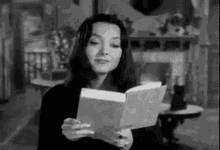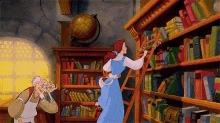When you search “Greatest journalists of all time,” the first people that come up are Walter Cronkite, Bob Woodward, Carl Bernstein and Edward R. Murrow, among other men who have taken 74% of the 50 spots on Google’s carousel. And while these men are no doubt exceptional journalists, they — along with the world of print — have consequently eclipsed the accomplishments of so many female reporters.
Journalism has always been a male-dominated field; a report made by the Women’s Media Center in 2017 said that of the bylines and other credits in various news outlets and mediums, only 38% were received by women. The report also noted that 84% of the Pulitzer Prizes from the last century have gone to men.
But under all this is a group of women in a class of their own when it comes to journalism. These five women (and plenty others) pioneered the way for future female journalists and made some outstanding contributions to the field in the process. Not only should they be celebrated for their bravery and ground-breaking discoveries, but they should also be recognized for their perseverance in an often cruel and brutal battle against a deeply entrenched gender divide.
Their stories are riddled with dangerous escapades, undercover investigations, scandals and secrets, with inspiring heroines activists and, above all, journalists at the center.
Let us slide into your dms 🥰
Get notified of top trending articles like this one every week! (we won't spam you)1. Nellie Bly (1864-1922)
Elizabeth Cochrane Seaman, better known by her pseudonym, Nellie Bly, has to be my personal favorite on this list because her investigative work as an undercover journalist is simply unmatched.
Bly worked for the Pittsburgh Dispatch for several years before her debut as the first “stunt girl” in journalism. In 1887, Joseph Pulitzer, editor and publisher of the Pittsburgh Dispatch and the New York World gave the 23 year old a massive assignment with limited guidance and instruction: she was to infiltrate the asylum on Blackwell’s Island (now Roosevelt Island) in order to bring home an exposé on the horrors of mental hospitals.
Pretending to be an immigrant from Cuba, Nellie Bly made a carefully planned scene in front of New York police, was arrested and got sent to New York City’s Lunatic Asylum on Blackwell’s Island that contained only a few buildings at the time. For 10 days, Bly lived with other women in the asylum, some of whom were psychotic, suicidal and delusional and some of whom had been falsely accused of insanity. She and the other patients were subject to gruesome living conditions and harsh treatment that made existing completely unbearable.
Sickened and appalled, Nellie Bly took everything she had seen and experienced back with her to New York City where she churned out “Ten Days in a Mad-House” for the New York World. It was a six-part series that shocked the country and led to mental illness reform as well as the beginning of the stunt-girl movement that encouraged other women to engage in hands-on journalism practices that would eventually develop into investigative and immersive journalism.
“Ten Days in a Mad-House” also made Nellie Bly one of the most famous journalists in the country. Just two years later, Nellie Bly rocketed to new heights in her career after beginning a 25,000-mile journey inspired by Jules Verne’s novel, “Around the World in Eighty Days.” Bly completed her trip in just 72.
In 1895, Nellie Bly married millionaire Robert Seaman who owned the Iron Clad Manufacturing Company. When he died in 1904, Bly was left in control of the firm and went on to patent several oil-related inventions, many of which are still in use today. She eventually returned to journalism and covered the Women’s Suffrage Movement and World War 1 all the way up until her death in 1922.

Take the Quiz: Which Harry Potter Character Are You?
Find out which character matches your personality!
2. Lois Bancroft Long (1901-1974)
Lois Bancroft Long, “Lipstick” to her readers, is another one of my favorites. Often called a “wild woman” and “the epitome of a flapper," Long wrote for Vogue and Vanity Fair before finding her fame at The New Yorker, a magazine she began writing for in 1925 and continued to write for for 45 years.
She made her first appearance as Lipstick when Harold Ross, editor of The New Yorker decided that the young, party-crazed writer was just what he needed to shore up his struggling magazine. Long agreed and for $50 a week, she took over the nightlife in New York City column called “When Nights are Bold.”
Lois Long’s witty, honest style transformed The New Yorker, giving the column a large following and the magazine a new identity. She soon changed her column’s name to “Tables for Two” and wrote about the speakeasies and clubs of the roaring twenties that breathed life into New York’s nights.
She also wrote a fashion column titled “On and Off the Avenue” and became a fashion critic and The New Yorker’s first fashion editor in 1927.
Lois Long was admired for her humor and defiance and even more so for her lifestyle that gave her writing its fresh and clever voice. The famous flapper was completely devoted to nightlife and was out nearly every single night well into the morning. She often showed up to work at 4 a.m., drunk and still dressed to party because she wanted everything she had gathered from her wild night to be fresh on paper.
When the magazine moved, Long sat so far away from her assistant that they both resorted to using roller skates to communicate before management caved and moved them closer.
However, Long’s passion for parties did not last her entire life and in 1931, she quit Tables for Two. She continued to contribute fashion columns to The New Yorker and worked for the New York Evening Telegraph for a time, but she had left her hectic identity as Lipstick behind as she focused on her personal life.
Towards the end of her life, she wrote a book called “No Tumult, No Shouting” with her second of three husbands and edited and published her father’s last manuscript, “The Spirit of the Wild.” Lois Long lived to age 73 and is one of the most loved and recognized flapper journalists.
3. Veronica Guerin (1958-1996)
Veronica Guerin was an Irish crime reporter who wrote columns for Ireland’s most popular newspaper, The Sunday Independent. Her front-page crime exposés opened the public’s eyes to Ireland’s gang problem fueled by drugs and revealed several gang leaders and members.
As a driven journalist, danger never stopped Guerin from doing her job. For six years, she endured threats from gangs she had written about, and she often put her life on the line when directly confronting and interviewing gang members.
Guerin worked alone and reported and published information so sensitive that she garnered powerful and violent enemies that went to the extremes in an attempt to prevent her from writing. Undeterred, Guerin continued to expose the darkest secrets of the gang-land in Ireland, and she gained quite a reputation. Her aggressive style was dangerous but effective, and it allowed her to be one of the most prominent journalists in Ireland.
Unfortunately, her life and story were cut short in 1996 when she was murdered by drug lords seeking revenge.
4. Sarah Josepha Hale (1788-1879)
You may know Sarah Josepha Hale as the author of “Mary Had a Little Lamb,” but her achievements extended well beyond the popular nursery rhyme. Hale was unique in that unlike many of her female peers, she was able to receive many years of schooling as her parents advocated for education for both men and women.
This untraditional upbringing allowed Sarah Hale to pursue several scholarly projects and passions, encouraged by her husband, David Hale. When he died, Sarah turned to poetry which culminated in her most famous book “Poems for Our Children.”
But her writing career didn’t stop there. She became the editor of the Ladies’ Journal and eventually of Godey’s Lady’s Book, which was the most circulated magazine in America during the 1860s. Sarah Hale used her writing and editing skills to build a platform that voiced her opinions on current issues and feminism as well as to raise money for causes and historical preservation.
As a result of her widespread influence, Sarah Hale earned the title of the most powerful editor of the 19th century. Her work was never without controversy, but it was indisputably persuasive and influenced decisions at the highest level; it is said that her demand for Thanksgiving to be recognized as a national holiday was a major factor in Lincoln’s final decision.
And, as if life as a majorly influential editor wasn’t enough, Sarah Hale also helped found Vassar College. Sarah Hale was not as outspoken as the other women in this list, and she was not as present in social movements, but her influence speaks for itself, especially since very few women had even a fraction of the same influence.
It was a brand new world for Sarah Josepha Hale then, and thanks to her efforts, women continue to use writing to persuade and influence in impressive, far-reaching ways.
5. Margaret Fuller (1810-1850)
Margaret Fuller was a journalist, critic, educator, editor, translator and strong activist for women’s rights. Like Sarah Hale, Fuller was among the few that had access to a formal education that enriched her views on the world at an early age.
To overcome the financial hardships she faced after her father’s death, Fuller taught at Bronson Alcott’s Temple school until 1839. That same year, she began to write for The Dial where she wrote critiques, reviews and poetry. Later, she became the first female editor of the New York Tribune.
Margaret Fuller was an open feminist who had strong opinions about women’s place in society. One of her most notable works was “Women in the Nineteenth Century” which was published by Horace Greeley in 1845. It was a piece that demanded political equality and urged women to seek independence and fulfillment through education and activism. Because many of the ideas Fuller wrote about were unpopular among many, “Women in the Nineteenth Century” effectively brought the nation’s attention to women’s rights issues.
A well-rounded writer, Margaret Fuller also had a collection of essays published in Papers on Literature and Art before she left for Europe in 1846.
There, she was the first female overseas correspondent for the Tribune. It is alleged that in Europe she had a child out of wedlock with an Italian revolutionary, proving that drama often followed Fuller wherever she went.
It is also said that Margaret Fuller was the inspiration for Hester Prynne in Nathaniel Hawthorne’s The Scarlett Letter.
Fuller’s story is not often told, but her accomplishments and the strides she made for women are unparalleled. She takes a well-deserved rank amongst the best journalists of all time, even if Google disagrees.









.jpg)


